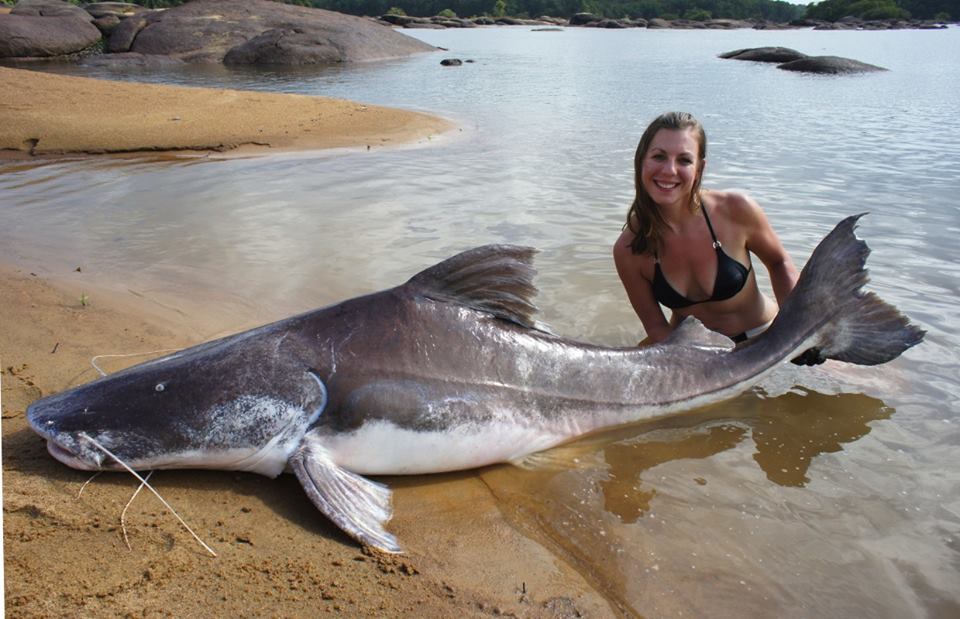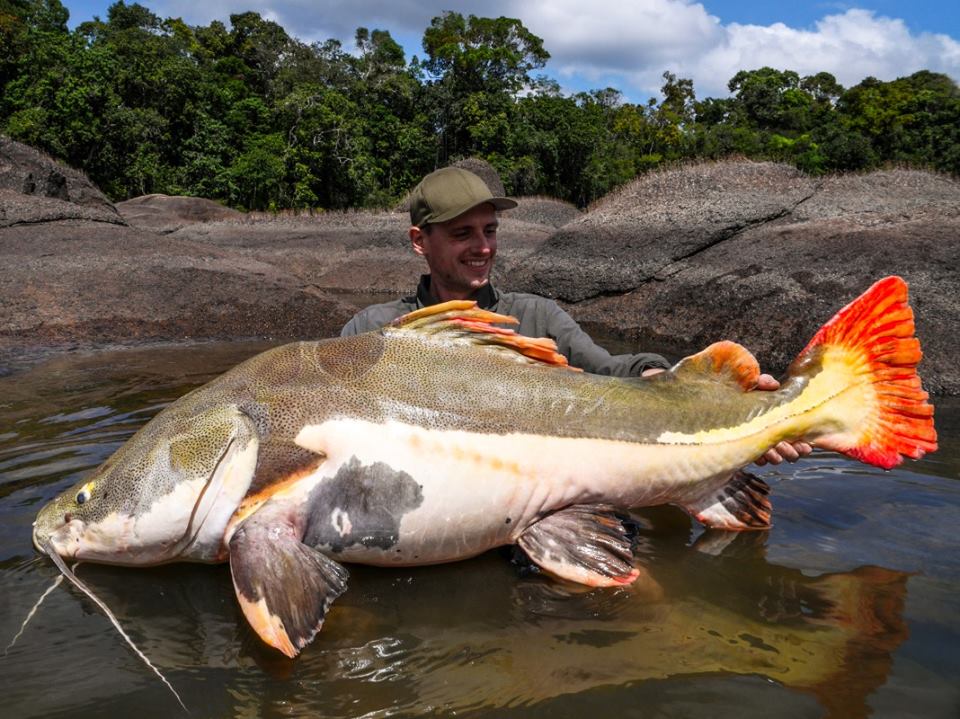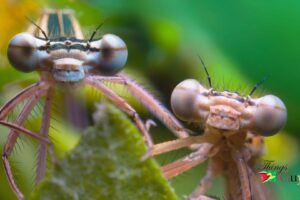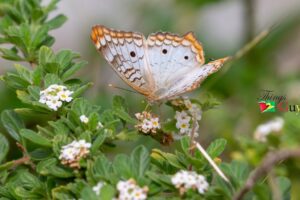Many of us are familiar with the scaleless, freshwater fish called the catfish. The catfish got its name from the prominent barbels that they possess. These barbels resembles a cat’s whiskers, hence the name catfish. These fishes are a diverse group of ray-finned fish; they range in size and behavior from the three largest species alive, the Mekong giant catfish from Southeast Asia, the wels catfish of Eurasia and the piraíba of South America, to detritivores (species that eat dead material on the bottom), and even to a tiny parasitic species commonly called the candiru, Vandellia cirrhosa.

The Piraíba | http://www.amazon-angler.com/jaguar-explorer-camp/4592339397
Despite their name, not all catfish have prominent barbels. Members of the Siluriformes order are defined by features of the skull and swimbladder. Catfish are of considerable commercial importance; many of the larger species are farmed or fished for food. Many of the smaller species, particularly the genus Corydoras, are important in the aquarium hobby.
Catfish Genus In Guyana
Brachyplatystoma is a genus of catfish from the family Pimelodidae. As the occasionally used common name goliath catfishes indicates, this genus includes some of the largest species of catfish, including the piraíba, B. filamentosum, which reaches up to the region of 3.6 metres (12 ft) in length. Brachyplatystoma are found in the Amazon and Orinoco basins, and other tropical freshwater and brackish habitats in South America. Some species are migratory.
Scientific Classification Of The Catfish
- Kingdom: Animalia
- Phylum: Chordata
- Class: Actinopterygii
- Order: Siluriformes
- Family: Pimelodidae
- Genus: Brachyplatystoma
Five Important Facts About The Catfish Genus Brachyplatystoma
- Barbels – Brachyplatystoma all exhibit long maxillary barbels that extend past the dorsal fin in all species, but may even extend to the caudal fin. The caudal fin of adult Brachyplatystoma fish is moderately to deeply forked. Brachyplatystoma have specialized pelagic young with greatly elongated barbels and fin filaments, and strongly ornamented pectoral spines.
- Length – Brachyplatystoma includes some of the largest species of Amazonian catfish, including the Piraíba, B. filamentosum, which reaches up to about 3.6 metres (12 ft) in length and 200 kilograms (440 lb) in weight. Even the most modest species reach about 60 centimetres (24 in). The other species range in size from about 1–2 metres (3.3–6.6 ft).
- Food – Brachyplatystoma are important food fish. In the Amazon Basin, thousands of metric tons of fish from this genus are caught for both local consumption as well as exportation. These fish are usually caught with the use of longlines or drift nets. They are also captured by harpoon as well as ropes with large fish hooks at the end.
- Fishing – Human activities are a concern in that they may disrupt these fishes. Dams may impede the migration of these fish both to and from their spawning sites. Gold prospecting may also frighten these large catfishes in the areas where they spawn. Deforestation can also affect the upriver spawning habitats. Because these fish may migrate back to their original tributary, overfishing in a certain area may reduce a whole genetic group. In some areas, catches have been diminishing due to overfishing.
- Aquarium – Brachyplatystoma are generally uncommon in the fishkeeping trade. The large size of many of these fish prohibit them from being maintained in anything but the largest of aquaria, or in public aquariums. These fish should be kept in well-oxygenated aquarium with a high current. Due to their large size, the aquarium should also be spacious and any tank mates must be large enough not to be eaten. The aquarium should not be brightly lit, and hiding places should be available. Breeding is unreported in captivity.
Tip: Fish of this genus are found in the Amazon, Orinoco, and the Guianas (Guyana) in South America. These fish generally inhabit areas that have a soft substrate, such as mud or sand.
Catfish Curry In Guyana
Catfish Curry
Ingredients:
- 2 catfish fillets, skinned and cut into 2-inch cubes
- 3 garlic cloves, crushed
- 3 green finger chilies, finely sliced
- 5 cm gingerroot, peeled and finely diced
- 3 tablespoons peanut oil
- 1 medium onion, finely sliced
- 2 teaspoons curry powder
- 1⁄2 teaspoon turmeric
- 1⁄2 teaspoon salt
- 200 ml coconut milk
- 150 ml boiling water
Method:
- Heat the groundnut (or vegetable, not olive) oil in a large pan, then add the onion and curry powder. Cook for four minutes, until the onion starts to caramelize.
- Add the garlic, ginger, chili, turmeric and salt and cook for a further two minutes.
- Add the water and half the coconut milk and simmer for two minutes.
- Add the fish and simmer, stirring, for a further 5-6 minutes.
- Add the remaining coconut milk and simmer for a further two minutes, or until the fish is cooked through the way you like it.
- Serve with basmati rice.
Catfish In Guyana
Fishing is a major hobby and job for many in Guyana. Indeed, for some they just catch fish for fun but for others it is their “daily bread”. Catfish curry is a famous dish in Guyana; many enjoy eating it especially when it is steaming hot just off the fire. The catfish genus found in Guyana is Brachyplatystoma; they have very long barbels and most in this genus are very large species. These fishes are not really kept in aquariums, persons usually catch them for food. Guyana’s rivers are filled with these flattened head fishes – swimming, digging and procreating.
In 2017, a 225lb piraíba catfish was caught in Guyana. The magnificent fish was caught by Steve Townson. Steve said: “I had the pleasure in landing this leviathan lau lau or piraíba last week at one of our mobile camps in Guyana. Weighing in (estimated by length and girth formula) at approximately 225lbs, it took me 45 minutes to bring to the boat, having towed us for more than 1km upriver.”
Article References:
- https://www.geniuskitchen.com/recipe/catfish-curry-312066
- https://en.wikipedia.org/wiki/Catfish
- https://en.wikipedia.org/wiki/Brachyplatystoma
- https://www.facebook.com/worldwidefishingadventures/posts/225lb-paraiba-catfish-from-guyanawe-have-a-picture-of-the-200lb-plus-lau-or-para/1191240094342029/
- https://www.total-fishing.com/steve-townson-lands-huge-paraiba-catfish-in-guyana-video/








1 Comment